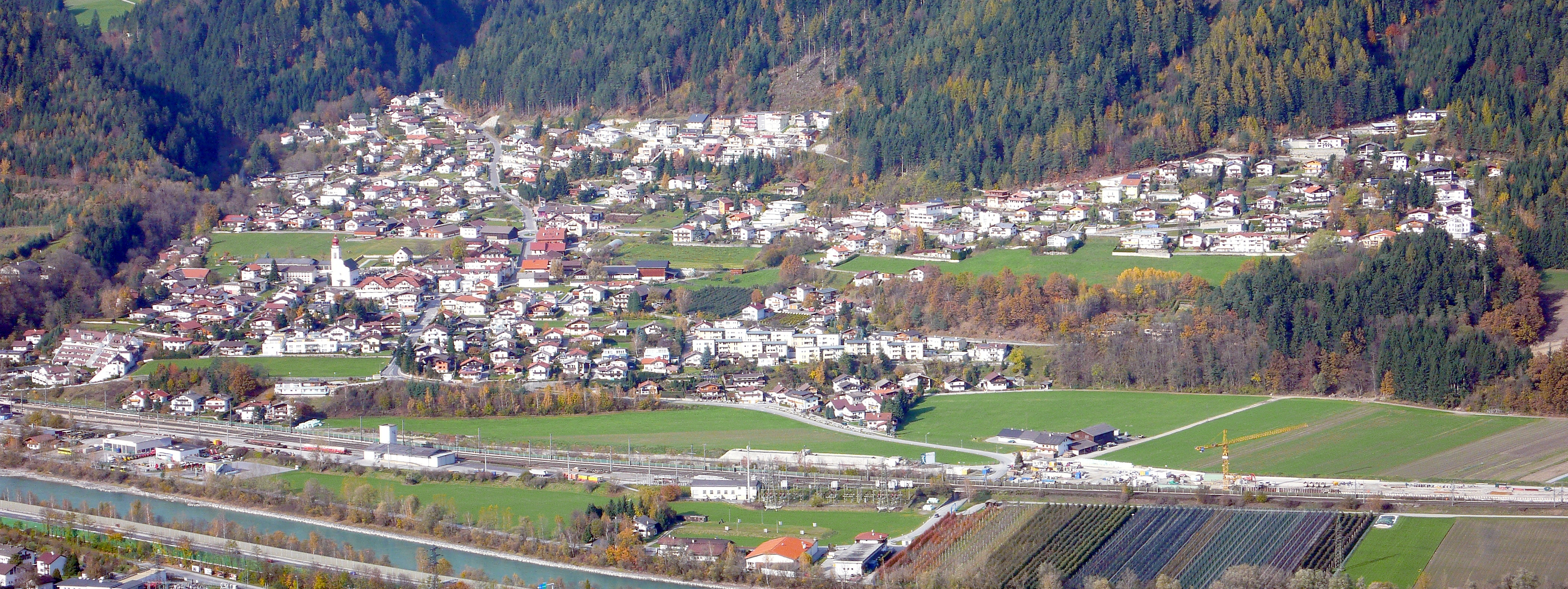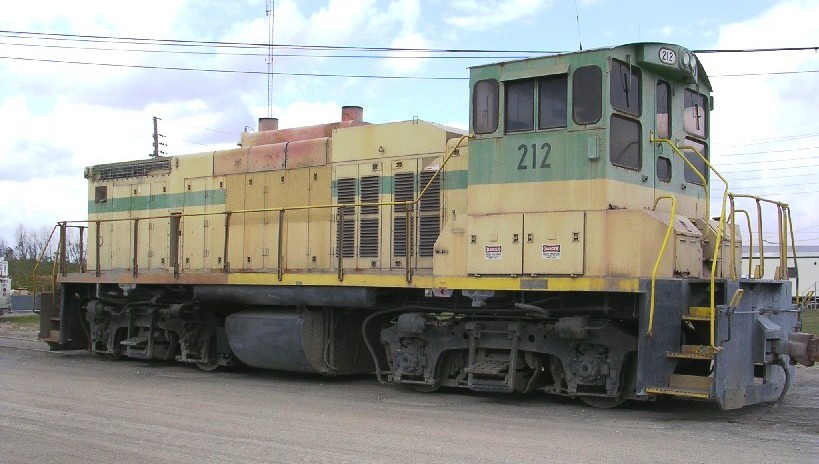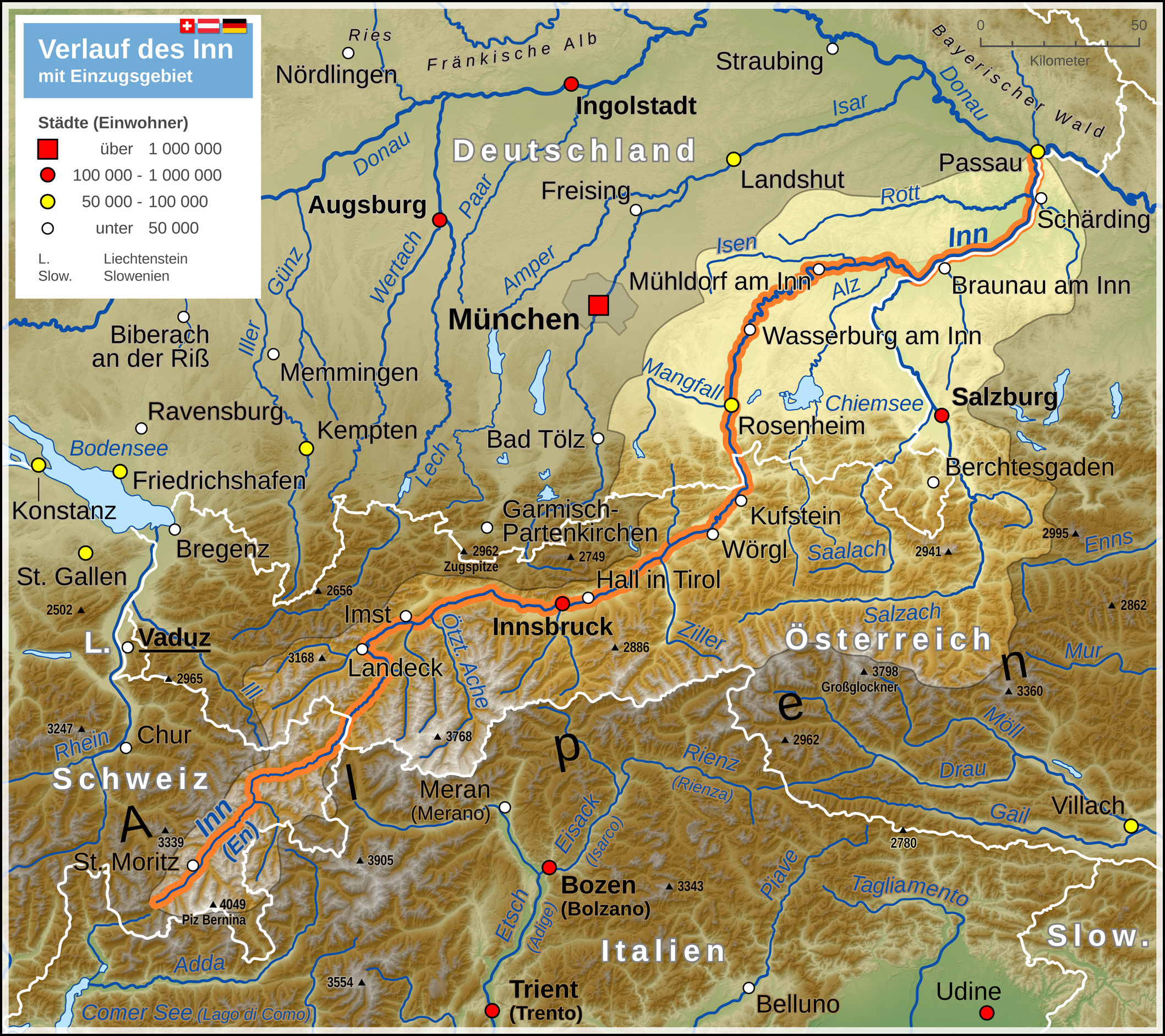|
Wörgl Hauptbahnhof
Wörgl Hauptbahnhof is the main railway station of Wörgl, a city in the Kufstein district of the Austrian federal state of Tyrol, about 20 km from the state border with Bavaria. It is a major hub for regional and international rail travel, both passenger and freight. Location Wörgl is located at the junction of two major rail lines. One is the former Lower Inn Valley Railway, designed by Alois Negrelli, the engineer who designed the Suez Canal, and opened in 1858. The route runs from Munich through Wörgl and Innsbruck to Verona. It was constructed by engineer Carl Ritter von Ghega, who also built the Semmering railway. The second is the electrified Western Railway, which runs from Vienna through Linz, Salzburg and Wörgl to Buchs, St. Gallen on the Swiss border. Some of its sections were once part of other lines: the Empress Elisabeth Railway from Vienna to Wörgl, the Salzburg-Tyrol Railway from Salzburg to Wörgl, and the Brixental Railway from Zell am See to Wörg ... [...More Info...] [...Related Items...] OR: [Wikipedia] [Google] [Baidu] |
Lower Inn Valley Railway
The Lower Inn Valley Railway (german: Unterinntalbahn) is a two-track, electrified railway line that is one of the major lines of the Austrian railways. It was originally opened as the '' k.k. Nordtiroler Staatsbahn'' (Imperial and Royal North Tyrolean State Railway). It begins at the German border near the Austrian city of Kufstein as a continuation of the Rosenheim–Kufstein line and runs in a generally south-westerly direction through Tyrol along the Inn valley to Innsbruck. The line is part of the Line 1 of Trans-European Transport Networks (TEN-T). The line is owned and operated by Austrian Federal Railways (ÖBB). History Emperor Franz Joseph I of Austria had ordered its construction in 1853. The line was the first railway in western Austria, opened on 24 November 1858. New line In order to increase the capacity of the track and in preparation for the construction of the Brenner Base Tunnel a new high-capacity line has been built between Kundl1 junction and Fritze ... [...More Info...] [...Related Items...] OR: [Wikipedia] [Google] [Baidu] |
Vienna
en, Viennese , iso_code = AT-9 , registration_plate = W , postal_code_type = Postal code , postal_code = , timezone = CET , utc_offset = +1 , timezone_DST = CEST , utc_offset_DST = +2 , blank_name = Vehicle registration , blank_info = W , blank1_name = GDP , blank1_info = € 96.5 billion (2020) , blank2_name = GDP per capita , blank2_info = € 50,400 (2020) , blank_name_sec1 = HDI (2019) , blank_info_sec1 = 0.947 · 1st of 9 , blank3_name = Seats in the Federal Council , blank3_info = , blank_name_sec2 = GeoTLD , blank_info_sec2 = .wien , website = , footnotes = , image_blank_emblem = Wien logo.svg , blank_emblem_size = Vienna ( ; german: Wien ; ba ... [...More Info...] [...Related Items...] OR: [Wikipedia] [Google] [Baidu] |
ÖBB Class 2070
The ÖBB 2070 is a class of 90 shunting and light multipurpose four axle B'B' Diesel-hydraulic locomotive built for the Austrian Federal Railways by Vossloh at the MaK locomotive plant in Kiel, Germany. Vossloh's type designation for the locomotive class is Vossloh G800 BB. A further 6 locomotives have been built and have been part of Vossloh locomotives leasing fleet. ÖBB 2070 The ÖBB 2070 was ordered in November 1998 as the result of a competitive tender. Along with the ÖBB Class 2068 built by Jenbacher in the 1990s they were intended to replace old shunting machines on the railway. The acquisition of the locomotives was part of a plan to modernise the Austrian locomotive fleet, which included the purchase of the ÖBB 1016 "Taurus" and ÖBB 2016 "Hercules" locomotives in the first decade of the 21st century. The locomotives are built to the standard MaK B'B' diesel hydraulic off-centre cab design as typified by the MaK G1206. ÖBB's locomotives have air conditioned c ... [...More Info...] [...Related Items...] OR: [Wikipedia] [Google] [Baidu] |
Switcher
A switcher, shunter, yard pilot, switch engine, yard goat, or shifter is a small railroad locomotive used for manoeuvring railroad cars inside a rail yard in a process known as ''switching'' (US) or ''shunting'' (UK). Switchers are not intended for moving trains over long distances but rather for assembling trains in order for another locomotive to take over. They do this in classification yards (Great Britain: ''marshalling yards''). Switchers may also make short transfer runs and even be the only motive power on branch lines and switching and terminal railroads. The term can also be used to describe the workers operating these engines or engaged in directing shunting operations. Switching locomotives may be purpose-built engines, but may also be downgraded main-line engines, or simply main-line engines assigned to switching. Switchers can also be used on short excursion train rides. The typical switcher is optimised for its job, being relatively low-powered but with a high ... [...More Info...] [...Related Items...] OR: [Wikipedia] [Google] [Baidu] |
Innsbruck Bypass
The Innsbruck bypass (German: ''Umfahrung Innsbruck'' or sometimes ''Güterzugumfahrung Innsbruck'', that is ''the Innsbruck freight railway bypass'') is a -long double-track electrified main line of the Austrian railways. It connects the Lower Inn Valley railway with the Brenner railway, bypassing Innsbruck. It was opened on 29 May 1994. The line is at a major part of the rail freight network of Austrian Federal Railways (ÖBB). The bypass is part of the Line 1 of Trans-European Transport Networks (TEN-T). It was intended to increase the capacity of the line and to reduce the noise created by freight trains on the city of Innsbruck. It cost an estimated €211 million to build. The Deutsche Reichsbahn (German Imperial Railways) built a local bypass of Innsbruck station during World War II in 1944, which was demolished in 1945. Major components of the Bypass Innsbruck are: *the grade-separated Fritzens-Wattens 2 junction, *the 488 metre-long bridge over the Inn, *the 12,696 ... [...More Info...] [...Related Items...] OR: [Wikipedia] [Google] [Baidu] |
Tyrol (state)
Tyrol (; german: Tirol ; it, Tirolo) is a States of Austria, state (''Land'') in western Austria. It comprises the Austrian part of the historical County of Tyrol, Princely County of Tyrol. It is a constituent part of the present-day Euroregion Tyrol–South Tyrol–Trentino (together with South Tyrol and Trentino in Italy). The capital of Tyrol is Innsbruck. Geography The state of Tyrol is separated into two parts, divided by a strip. The larger territory is called North Tyrol (''Nordtirol'') and the smaller area is called East Tyrol (''Osttirol''). The neighbouring Austrian state of Salzburg (state), Salzburg stands to the east, while on the south Tyrol has a border with the Italy, Italian province of South Tyrol (Trentino-Alto Adige/Südtirol) which was part of the Austro-Hungarian Empire before the First World War. With a land area of , Tyrol is the third-largest state in Austria. Tyrol shares its borders with the federal state of Salzburg in the east and Vorarlberg in th ... [...More Info...] [...Related Items...] OR: [Wikipedia] [Google] [Baidu] |
Innsbruck Hauptbahnhof
Innsbruck Hauptbahnhof (German for ''Innsbruck Main Station or'' ''Central Station'') is the main railway station in Innsbruck, the capital city of the Austrian federal state of Tyrol. Opened in 1853, the station is a major hub for western and central Austria. In 2019, it was the 8th-busiest station in the country, and the 2nd-busiest outside of Vienna after only Linz Hauptbahnhof, with 315 train movements and 38,500 passengers daily. The station is owned and operated by ÖBB. It forms the junction of the Arlberg Railway to Bregenz, Brenner Railway to Italy, Mittenwald Railway to Germany's region of Ällgau, Stubaitalbahn and the main east-west artery Lower Inn Valley Railway. Location Innsbruck Hauptbahnhof is located at Südtiroler Platz. It is at the southeastern side of the city centre and a 10-minute walk away. History The planning of a railway line in the region of Tyrol began in 1850 under the Austrian Empire. Three years later, Emperor Franz Joseph I approved the r ... [...More Info...] [...Related Items...] OR: [Wikipedia] [Google] [Baidu] |
Inn (river)
, image = UnterinntalWest.JPG , image_caption = Lower Inn valley from Rattenberg castle , source1_location = Swiss Alps (Lägh dal Lunghin) , source1_elevation = , source1_coordinates= , mouth_location = Danube (Passau) , mouth_elevation = , mouth_coordinates = , progression = , subdivision_type1 = Countries , subdivision_name1 = , subdivision_type2 = Cities , subdivision_name2 = , length = , discharge1_location= mouth , discharge1_avg = , basin_size = The Inn ( la, Aenus; rm, En) is a river in Switzerland, Austria and Germany. The river is long. It is a right tributary of the Danube and it is the third largest tributary of the Danube by discharge. The highest point of its drainage basin is the summit of Piz Bernina at . The Engadine, the valley of the En, is the only Swiss valley whose waters end up in the Black Sea (via the Danube). Etymology The name Inn is derived from the old Celtic words ''en'' and ''enios'', ... [...More Info...] [...Related Items...] OR: [Wikipedia] [Google] [Baidu] |
Empress Elisabeth Railway
The Empress Elisabeth Railway (german: Kaiserin Elisabeth-Bahn, KEB) was the name of a former railway company during the time of the Austro-Hungarian monarchy. Its rail network was centred on the Western Railway line from Vienna to Salzburg with a branch to Passau. The company was nationalised by the Imperial Royal Austrian State Railways in 1884. History On 21 June 1851 the Austrian Empire and the Kingdom of Bavaria signed a treaty to build a railway line from Vienna via Salzburg to Munich, and also agreed upon an extension from Rosenheim via Kufstein to Innsbruck as well as the continuation of the railroad from Nuremberg via Regensburg and Passau to Linz. First plans were set up at the behest of the industrialist Hermann Dietrich Lindheim (1790–1860), who together with the German businessman Ernst Merck (1811–1863) founded the ''Kaiserin Elisabeth-Bahn'' railway company, named after Empress Elisabeth of Austria. Funded by Salomon Mayer von Rothschild (1774 –1855 ... [...More Info...] [...Related Items...] OR: [Wikipedia] [Google] [Baidu] |




